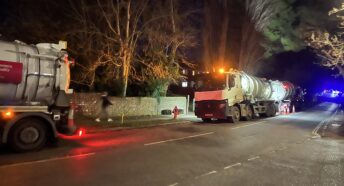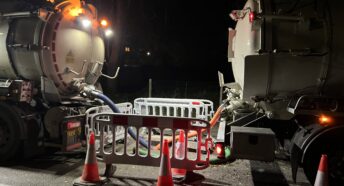New approach needed to development and sewage infrastructure
CPRE Sussex has responded to the Call for Evidence by the Independent Commission on the Water Sector Regulatory System.
Our response highlights our research on the under-reported phenomenon, of frequently recurring, unplanned, unpermitted diffuse sewage pollution from burst pipes, manholes and other unmonitored sites. This results in sewage on people’s streets and in their homes and gardens – or tankers and temporary pipes being repeatedly deployed to ‘bail out’ sewerage systems that simply cannot cope. 78% of parish and town councils across Sussex told us that they experience sewage flooding in their areas. Our full response below includes a summary of the survey results.
Our work on development planning makes us aware of the apparently fundamental disconnect between the planning system on the one hand and the processes for managing investment in sewerage infrastructure on the other. An additional 1.5 homes added to the existing, creaking sewerage system with little or no regard to the capacity of the system or when it will be upgraded, will place significant additional pressures on both permitted storm outflows and unplanned diffuse sewage flooding.
Our response calls for
– Government providing clearer national strategic direction on investment in water supply, sewerage and flood management aligned with objectives around housing and other development, with national objectives transposed strategically at the subregional level including in the Spatial Development Strategy (through the proposed Mayoral Combined County Authority, in the case of Sussex) and implemented by water companies in close liaison with local authorities.
– The National Planning Policy Framework to support the principle that sewerage deficiencies must be resolved before new home developments are allowed to be built or occupied
– Defra and the Department of Health to review the extent of diffuse sewage flooding and its threats to public health, and provide advice to local authorities.
– Whole catchment reporting of sewage releases, pollution data (including the effect on public health), the capacity/overloading of sewerage systems, and the resilience of these to housing development, used as a key input to Spatial Development Strategies and Local Plans.
– An approach to the allocation of sites in Local Plans that ties the timing of development to the satisfactory upgrade of sewerage capacity in water companies’ Asset Management Plans.
– The regular use of pre-commencement “Grampian” conditions by local planning authorities when considering and making decisions on development planning applications, to require that sewerage infrastructure is upgraded before construction or occupation of new sites.
Read:
CPRE Sussex full response:: CPRE Sussex response to Water Commission call for evidence 23 April 2025
Terms of reference of Independent Commission on the Water Sector Regulatory System: www.gov.uk/government/publications/independent-commission-on-the-water-sector-regulatory-system-terms-of-reference/independent-commission-on-the-water-sector-regulatory-system-terms-of-reference
Call for evidence by Independent Commission on the Water Sector Regulatory System: https://consult.defra.gov.uk/independent-water-commission/independent-commission-on-the-water-sector-regulat/





